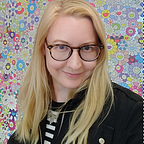Designing for users with anxiety
…is more important now than ever before.
I came across a poster with tips on designing for users with anxiety a couple of years ago (see the full poster below and download here). It struck me as a useful reminder to include mental health in our thinking about accessibility.
Now, in the time of COVID-19, we are experiencing record levels of anxiety. This is coupled with increased Internet usage, especially of social networks.
In England we entered the second official lockdown last week. Like many, I felt a rising sense of dread about this new set of restrictions. My sleep was disrupted and I constantly worried about further isolation from friends and family. I had difficulty staying focused on anything. Yet it seemed important to stay connected, to keep in touch with people somehow.
This is where social networking apps augment our lives. They are all about connection; they let us express and share, make, and keep friendships. But as recent documentary, The Social Dilemma explains, social apps are designed to be addictive. These products hook us with the promise of a like, a message or a new follower, which our brains treat as a reward. We are notified of every interaction and encouraged to keep checking for more, scrolling the news feed that never ends. It’s easy to share, but difficult to delete.
I wasn’t thinking about this when I went to add an Instagram story, intending to use a photo from my camera roll. The app opened in selfie view and by accident, I clumsily took a photo that was shared as a story. Or perhaps it was a very short video clip? I quickly went to delete it, but couldn’t. The way to delete is by clicking the 3 vertical dots labeled “More” to bring up a menu. But the story was appearing and disappearing too quickly for me to click it.
Meet the first don’t: “Don’t rush users or set impractical time limits”.
Another way to control stories is by finding the story settings, deep in the menu. I couldn’t see a way to delete a story there, but I could hide it from each of my followers. But I was still anxious about whether this took immediate effect. The second don’t: “Don’t leave users confused about next steps or timeframes”.
So I temporarily disabled my Instagram account.
This had all escalated very quickly and I hadn’t read the small print. I checked with a friend and it looked to her that my account was empty. I made the mistake of clicking back into Instagram later that day, a force of habit. My account restored itself, which I didn’t intend. I tried to disable it again and saw the message above that it’s only possible to disable once a week. The third don’t: “Don’t leave users uncertain about the consequences of their actions”.
The design failed to meet the needs of this anxious user, because it was designed to addict. Sharing content and reinstating the account were so easy they were done by accident. Deleting should be simple, but friction is introduced to each part of the process. A user must tap the correct part of the screen within a timeframe, access a menu, and click action. There should be one button to hide content from view, but the story settings mean adjusting for each individual follower. Temporarily disabling the account is lacking clarity, confirmation, and instructions on how reinstating works.
Please share this poster and keep a close eye on your social media usage.
